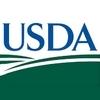Check out what is new in Poultry Industry
Find the best technical articles, forums, and videos on Poultry Industry at Engormix. Enter now and interact with the world's largest agricultural social network.
INTRODUCTION Members of the genus avian adenovirus (AAV), from the family Adenoviridae, affect birds and are considered as important pathogens in the poultry industry. However, the importance of AAV as primary pathogens remains controversial because strains from the same serotype show variable pathogenicity (Okuda et al., 2006; Marek et al., 2010). The fowl adenoviruses (FAdVs) belong to group 1 Aviadenovirus. These are further classified into 12 serotypes, 1-8a, 8b-11, of...
Comments : 0
Recommendations: 0
Trace minerals are indispensable components in poultry diets. Minerals like Calcium, Phosphorus, and Manganese play a major role in growth, bone development of birds, whereas Copper and Zinc are responsible for maintaining the feather color. Minerals have a key role in enzyme structure like Catalase (Fe), carbonic anhydrous (Zn), SOD (Cu, Zn, Mn) and GSH (Se). There are two forms of trace elements available to birds ie., Inorganic and Organic form. Trace minerals in inorganic forms such as...
Comments : 2
Recommendations: 2
.mp4&w=3840&q=75)
Breno Beirão (Universidade Federal do Paraná, Brazil) commented on the needs of farmers in order to make a successful transition and comply with the current demands of the industry, during IPVS2022 in Rio de Janeiro, Brazil....
Comments : 5
Recommendations: 1
Introduction Water is considered an essential nutrient as it is involved in every metabolic function of the body. It represents about 70% of body weight, and its body content decreases per weight unit as the animal ages, despite the increase in water consumption. Water turnover rate is high compared to that of other compounds (Leeson & Summers, 1997). Water intake is a determinant of broiler performance, as it influences bird health and welfare status (Brooks, 1994;...
Comments : 1
Recommendations: 3
INTRODUCTION Footpad dermatitis (FPD) is present in many different types of broiler production systems. In 1 study, Pagazaurtundua and Warriss (2006) estimated prevalence of FPD ranged from 9.6 to 98.1% depending on the housing system used. This common issue has a large impact on growers because the presence of FPD is associated with decreased live weight and leg meat yield and increased carcass condemnations (Hashimoto et al., 2013). These condemnations can have a massive...
Comments : 1
Recommendations: 0
.mp4&w=3840&q=75)
In this video interview, Martina Kluenemann, Research Manager for Nutrition Immunology and Physiology at Evonik Animal Nutrition, highlights how Guanidinoacetic acid (GAA) could be beneficial to improving animal energy metabolism in animal diets...
Comments : 2
Recommendations: 7
Introduction Saponins are a broad group of plant-derived compounds composed of both water-soluble and fat-soluble moieties. These properties impart detergent-like qualities to these molecules that allow them to display many biological activities (Cheeke 2000). Studies of their function in plants have indicated that insect attack and invasion by pathogens are reduced in their presence (Sparg et al. 2004). Due to these activities, saponins have received much attention in the last...
Comments : 0
Recommendations: 0
INTRODUCTION The United Nations estimates that there will be more than 9 billion people on the planet by the year 2050 (Roberts, 2011); thus, the world population will be 32% higher than that in 2006. In addition, the meat consumption per person per year is predicted to increase by 26% in the same period and will primarily comprise chicken consumption (FAO, 2010; OECD-FAO, 2010). Because of increasing concerns regarding antimicrobial resistance (Gadde et al., 2017b), growing...
Comments : 0
Recommendations: 0


Prices Hold, Pressures Build: What’s Moving the Veterinary API Market
Suggested link
CLINICAL AND SUBCLINICAL DISEASE Necrotic enteritis (NE) due to Clostridium perfringens is a disease of chickens (broilers, broiler breeders, commercial layers) and turkeys (Opengart and Songer, 2013). NE most often is diagnosed when it results in mortality and the presence of the gross lesion of a roughened-appearing mucosal surface of the small intestine at necropsy. However, the greatest economic loss to poultry producers may be due to the subclinical form of NE, which causes...
Comments : 1
Recommendations: 0
...
Comments : 0
Recommendations: 0
INTRODUCTION In the United States and most parts the world, the biggest portion of poultry diets is comprised of carbohydrates, with corn being the main cereal grain used in the feed industry (Moran, 1982; Ai and Jane, 2016; Agristats, 2018; IGC, 2018). Corn is dried on the field or usually dried either by constant flow or batch drying after harvesting, so it could be included in poultry feeds. It has been reported that temperatures while drying could reach more than 100C mainly...
Comments : 0
Recommendations: 0
INTRODUCTION Corn and soybean meal are ingredients that have a good digestibility, however depending on the storage, crop and variety, these ingredients may have a change in their nutritional quality. For broilers, these ingredients constitute around 70 and 30% of the diet, respectively. Thus, any small improvement in their quality significantly influences the performance of the broiler chickens and the meat production cost. The carbohydrate fraction of cereal ingredients has...
Comments : 2
Recommendations: 1


Antibacterial activity of Bacillus species-derived surfactin on Brachyspira hyodysenteriae and Clostridium perfringens (Extract)
Suggested link
Deoxynivalenol (DON; vomitoxin) is a trichothecene mycotoxin that is produced by Fusarium graminearum (F. graminearum) and is prevalently found in grains such as wheat, corn, barley and their by-products. Food and feed contaminated with DON cause a variety of adverse health effects in humans and farm animals. Poultry are also adversely affected by DON but less susceptible due to differences in DON metabolism. Because of the differences in breeds, types of diet and strains of poultry,...
Comments : 0
Recommendations: 1
Background For many years the commercial broiler industry has focused on genetic selection for economically important traits such as rapid gain of muscle mass, decreased time from hatch to market, and increased feed efficiency. Undoubtedly, this strategy has resulted in the development of a chicken genotype with superior growth characteristics, but history has shown that intensive genetic selection in meat type poultry for production traits will inevitably lead to occurrence of...
Comments : 1
Recommendations: 1
WHAT IS HEAT STRESS? It is a combination of metabolic and environmental factors that forces animals to undergo physiological, metabolic and behavioral adaptations to maintain body temperature within normal limits and in a sustained mode. Heat stress occurs when the...
Comments : 0
Recommendations: 3
The history of antibiotic use in poultry feed is quite old and in a very short period of time it gained a special identity as an antibiotic growth promoter (AGP). There is no doubt, this special name came from its proven effect on the growth performance. However, Health officials desperate to maintain the efficacy of...
Comments : 0
Recommendations: 4
...
Comments : 0
Recommendations: 0
This award recognizes the achievements of PSA members in the early stages of their career in academia. It is given every other year.
Dawn Koltes
Iowa State University
Dawn Koltes is an assistant professor in the Department of Animal Science at Iowa State...
Comments : 0
Recommendations: 1
This award recognizes the achievements of PSA members in the early stages of their career in poultry research. It is given every other year.
Elizabeth Bobeck
Iowa State University
Dr. Elizabeth Bobeck completed her PhD at UW-Madison under...
Comments : 4
Recommendations: 3
1. Introduction Newcastle disease (ND) is a highly contagious avian disease with a significant impact on global poultry production. ND is caused by the Newcastle disease virus (NDV), formerly known as Avian orthoavulavirus 1 (AOAV-1), belonging to the family Paramyxoviridae (https://talk.ictvonline.org/taxonomy/ accessed on 20 October 2021). The genome of NDV is single-stranded, non-segmented, negative-sense RNA encoding six structural proteins: nucleocapsid protein (NP),...
Comments : 0
Recommendations: 0












.jpg&w=3840&q=75)




.jpg&w=3840&q=75)
















